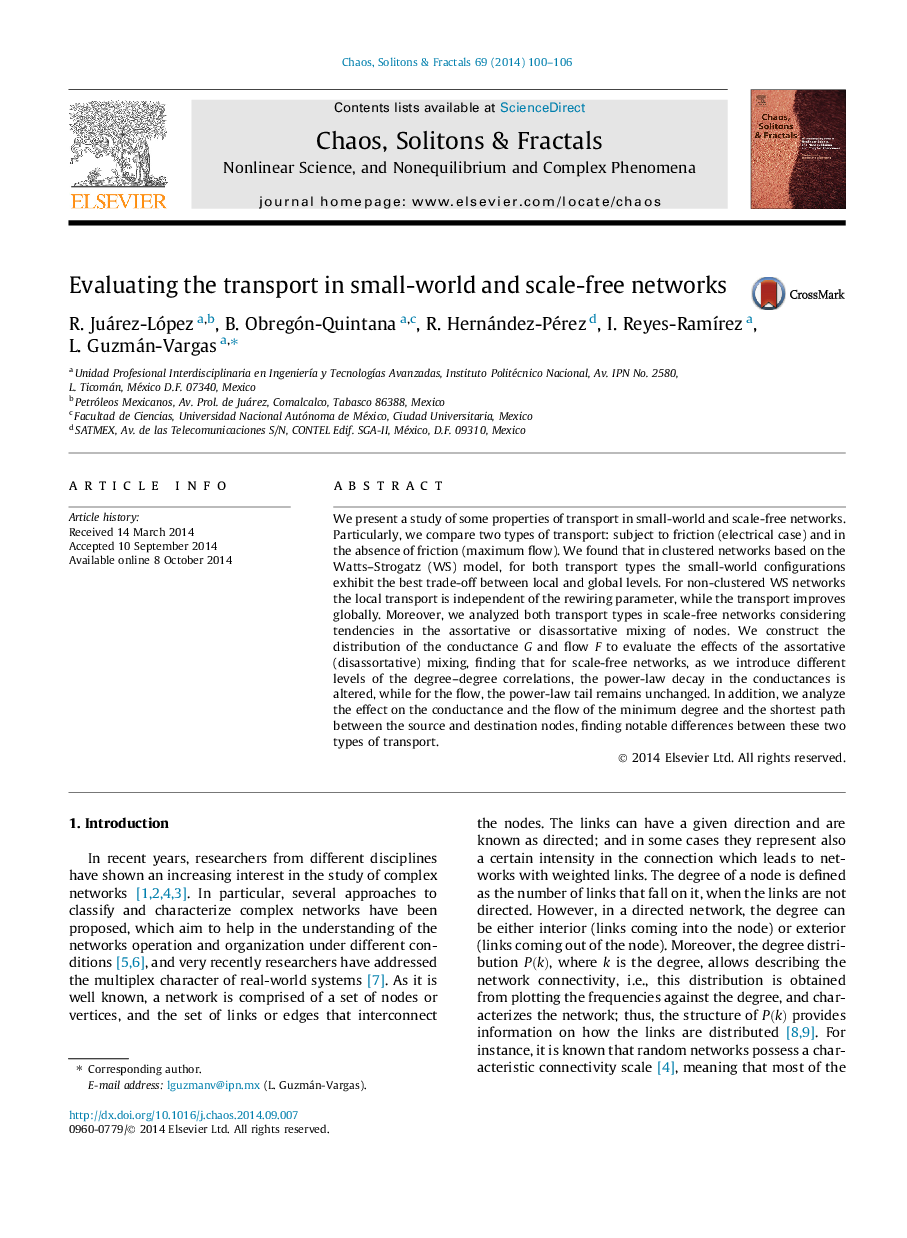| Article ID | Journal | Published Year | Pages | File Type |
|---|---|---|---|---|
| 1889033 | Chaos, Solitons & Fractals | 2014 | 7 Pages |
We present a study of some properties of transport in small-world and scale-free networks. Particularly, we compare two types of transport: subject to friction (electrical case) and in the absence of friction (maximum flow). We found that in clustered networks based on the Watts–Strogatz (WS) model, for both transport types the small-world configurations exhibit the best trade-off between local and global levels. For non-clustered WS networks the local transport is independent of the rewiring parameter, while the transport improves globally. Moreover, we analyzed both transport types in scale-free networks considering tendencies in the assortative or disassortative mixing of nodes. We construct the distribution of the conductance G and flow F to evaluate the effects of the assortative (disassortative) mixing, finding that for scale-free networks, as we introduce different levels of the degree–degree correlations, the power-law decay in the conductances is altered, while for the flow, the power-law tail remains unchanged. In addition, we analyze the effect on the conductance and the flow of the minimum degree and the shortest path between the source and destination nodes, finding notable differences between these two types of transport.
